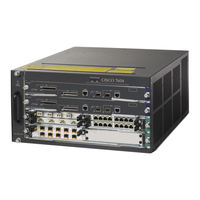Cisco CISCO7401-DC48-RF - 7401 ASR Router Manuals
Manuals and User Guides for Cisco CISCO7401-DC48-RF - 7401 ASR Router. We have 1 Cisco CISCO7401-DC48-RF - 7401 ASR Router manual available for free PDF download: Configuration Manual
Cisco CISCO7401-DC48-RF - 7401 ASR Router Configuration Manual (308 pages)
NX-OS Interfaces
Brand: Cisco
|
Category: Recording Equipment
|
Size: 2.01 MB
Table of Contents
Advertisement
Advertisement
Related Products
- Cisco CISCO7401-2DC48-RF - 7400 Router
- Cisco CISCO7401ASR-CP-RF - 7401 Router
- Cisco CISCO7120-SMI3 - 7120 Router
- Cisco CISCO7140-2MM3-RF - 7140 Router
- Cisco CISCO7140-2T3-RF - 7140 Router
- Cisco CISCO7204
- Cisco CISCO7206VXR
- Cisco C7140-2FE/VPN/K9 - 7140 Router
- Cisco CX-CIP2-ECAP1 Series
- Cisco Systems CX-CIP2-U-ECA1 Series
